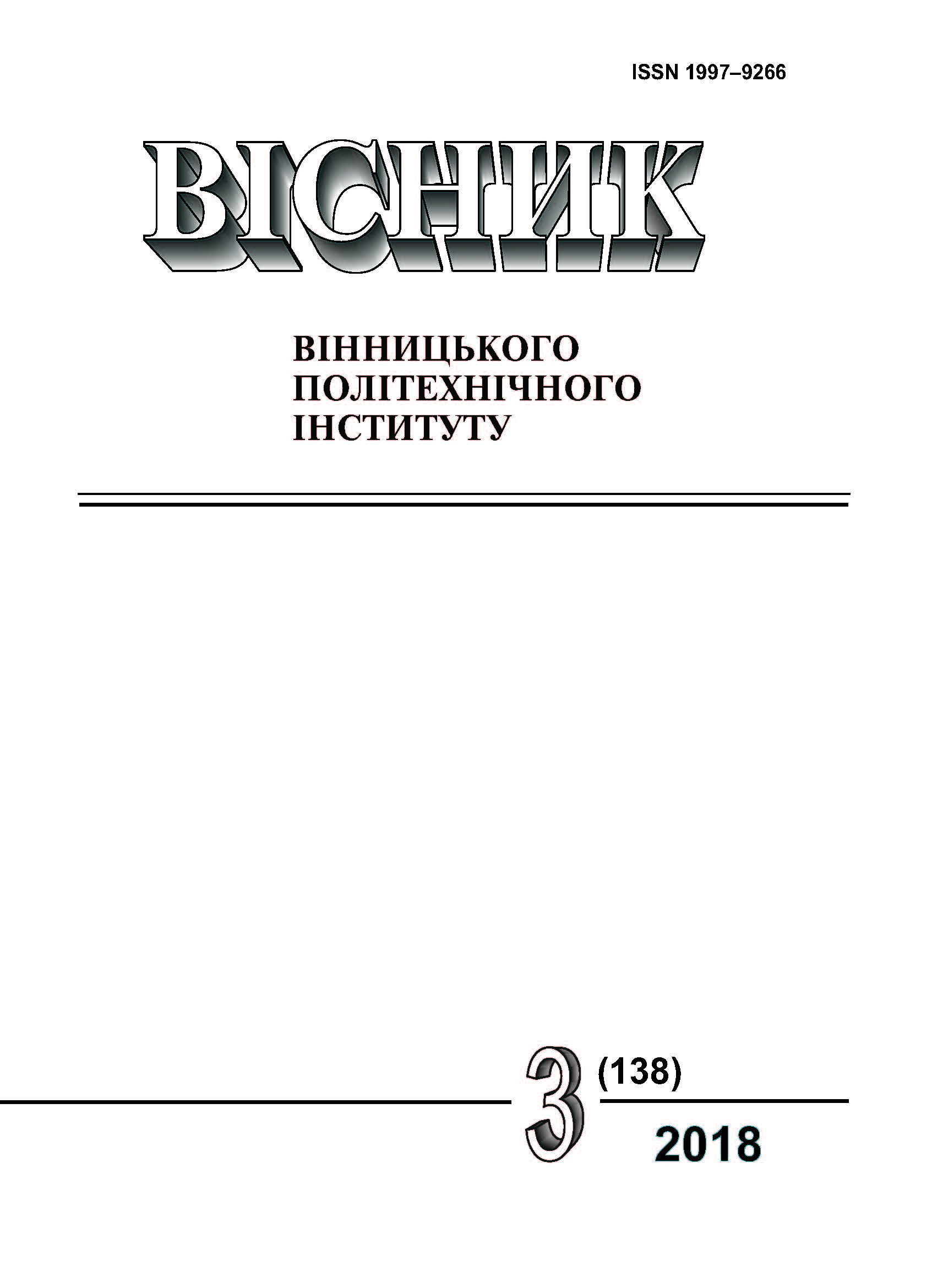Fast Charge of Dc Link Capacitor in Autonomous System with Vector-Controlled Induction Generator
Keywords:
induction generator, field-oriented control, autonomous power generating systemsAbstract
The algorithm of fast charging of a capacitor in the DC link for indirect rotor field-oriented vector control system of the induction generator is presented. This algorithm provides the operation of an induction generator with maximum output power over the entire charge time of the capacitor in the DC link. The obtained dependence allows us to determine the reference for torque component of current in the induction generator, which will provide the minimum charge time of the capacitor in the DC link without breaking the physics of induction generator.
There has been performed a comparative study of charge speed of the capacitor in the DC link with implementation of the proposed algorithm and the standard one. In the standard algorithm, the charge of the capacitor in the DC link is carried out by tracking reference voltage trajectory with limited first derivative.
The research was carried out with the method of mathematical modeling using complete dynamic model of induction generator with proportional-integral voltage regulator based on indirect vector control. Comparative tests of charge speed are performed for induction machine with rated power of 5.5 kW and rated speed of 1430 rpm for two speeds: synchronous speed (150 rad/s) and half synchronous speed (75 rad/s).
The results of the research showed that the proposed algorithm provides optimal value of torque component of induction generator current during the entire charge process. By doing this, it provides the operation of an induction generator with maximum power and allows reducing the charge time by more than 30 % comparatively to the standard algorithm that uses voltage reference trajectory with a constant charge rate of the capacitor in the DC link. It should be noted, that the peak maximum values of currents in both algorithms are equal during the whole process of charge. Implementation of the proposed algorithm in control systems of autonomous generator will reduce the start-up time of backup power systems, which is critical for their operation.
References
R. O. C. Lyra, S. R. Silva, and P. C. Cortizo, “Direct and indirect flux control of an isolated induction generator,” IEE Power Electronics and Drive Systems, pp. 140-145, 1995.
S. Hazra and P. Sensarma, “Vector approach for self-excitation and control of induction machine in stand-alone wind power generation," in IET Renewable Power Generation, vol. 5, no. 5, pp. 397-405, September 2011.
S. Peresada, S. Kovbasa, S. Korol, and N. Zhelinskyi, “Feedback linearizing field-oriented control of induction generator: theory and experiments,” Tekhnichna Elektrodynamika, no. 2, pp. 48-56, 2017.
S. Korol, S. Buryan, M. Pushkar, and M. Ostroverkhov, “Investigation the Maximal Values of Flux and Stator Current of Autonomous Induction Generator,” in Proc. IEEE Int. Conf. UKRCON-2017, pp. 560-563.
S. Peresada, S. Kovbasa, S. Korol, N. Pechenik, and N. Zhelinskyi, Indirect Field Oriented Output Feedback Linearized Control of Induction Generator,” in Proceedings of 2016 IEEE 2nd International Conference on Intelligent Energy and Power Systems (IEPS), pp. 187-191, Jun. 2016.
Downloads
-
PDF (Українська)
Downloads: 120
Published
How to Cite
Issue
Section
License
Authors who publish with this journal agree to the following terms:
- Authors retain copyright and grant the journal right of first publication.
- Authors are able to enter into separate, additional contractual arrangements for the non-exclusive distribution of the journal's published version of the work (e.g., post it to an institutional repository or publish it in a book), with an acknowledgment of its initial publication in this journal.
- Authors are permitted and encouraged to post their work online (e.g., in institutional repositories or on their website) prior to and during the submission process, as it can lead to productive exchanges, as well as earlier and greater citation of published work (See The Effect of Open Access).





